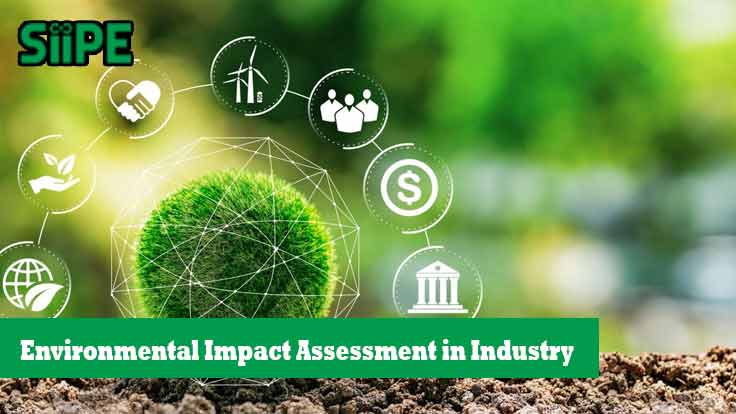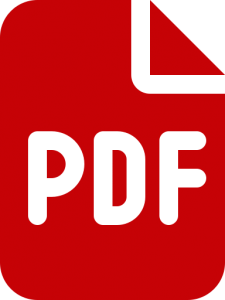As global industrialization continues to expand, balancing economic progress with environmental preservation becomes a top priority. This is where the Environmental Impact Assessment (EIA) comes in—a tool designed to evaluate the potential environmental consequences of industrial projects before they begin.
In this article, we’ll explore what EIA is, why it’s essential in the industrial sector, how the process works, and how businesses can benefit from responsible environmental planning.
What Is an Environmental Impact Assessment (EIA)?
Environmental Impact Assessment is a formal process used to predict the environmental effects—positive or negative—of a proposed industrial project. This includes evaluating the impact on air, water, soil, biodiversity, noise levels, and human health.
The purpose of an EIA is not to stop development, but to ensure that it happens responsibly, minimizing harm and optimizing environmental benefits.
Why EIA Is Crucial for Industry
Industrial activities—such as manufacturing, mining, energy production, and large-scale infrastructure—can have far-reaching impacts on the environment. An effective EIA:
-
Prevents irreversible environmental damage
-
Helps companies comply with legal and regulatory frameworks
-
Informs decision-makers with scientific data
-
Encourages sustainable resource use
-
Builds public trust and community support
In short, it helps industries grow without compromising the health of ecosystems and communities.
Key Components of an EIA
A complete Environmental Impact Assessment typically includes:
1. Screening
Determines whether a project requires a full EIA based on its scale, location, and potential risks.
2. Scoping
Identifies which environmental factors should be considered, such as air pollution, deforestation, or waste generation.
3. Impact Analysis
Analyzes the potential environmental, social, and health effects using scientific models, site surveys, and expert input.
4. Mitigation Strategies
Recommends steps to reduce negative impacts—such as pollution control measures, reforestation, or waste management plans.
5. Public Consultation
Involves stakeholders, communities, and experts in the review process to ensure transparency and accountability.
6. EIA Report & Decision-making
A formal report is submitted to authorities, who then decide whether the project is approved, modified, or rejected.
Industries That Commonly Require EIAs
EIA is typically mandated in sectors with significant environmental footprints, including:
-
Mining and extraction industries
-
Petrochemical and refinery plants
-
Power generation (coal, hydro, solar farms)
-
Industrial estate development
-
Waste processing facilities
-
Port and airport construction
Depending on the country, some smaller industries may also require simplified assessments or environmental permits.
Benefits of EIA for Businesses
✅ Legal Compliance
Avoid penalties or project delays by meeting national environmental regulations.
✅ Cost Savings
Identifying environmental risks early helps reduce long-term costs related to fines, environmental cleanup, or redesigns.
✅ Reputation & ESG Performance
EIA demonstrates a company’s commitment to Environmental, Social, and Governance (ESG) values, improving brand image and investor interest.
✅ Improved Planning
Environmental data from an EIA can support better design and operational efficiency.
Challenges in Implementing EIAs
Despite their importance, EIAs face several challenges:
-
📉 Inadequate data or local expertise
-
⏳ Long processing times and bureaucracy
-
🗂️ Weak enforcement of mitigation plans
-
💼 Pressure from businesses or political entities
-
🤝 Limited public engagement or transparency
These issues highlight the need for stronger regulatory frameworks, better-trained environmental consultants, and more open stakeholder participation.
Global Standards and Frameworks
Countries around the world have established EIA protocols. Some notable frameworks include:
-
The European Union EIA Directive
-
NEPA (National Environmental Policy Act) – United States
-
UK Environmental Impact Assessment Regulations
-
Indonesia’s AMDAL (Analisis Mengenai Dampak Lingkungan)
-
UNEP Guidelines on EIA Best Practices
Businesses with global operations should aim to align with international standards, not just local laws.
EIA and the Green Economy
Environmental assessments are more than regulatory checkboxes—they’re tools for creating a circular and sustainable industrial ecosystem.
By adopting EIA practices early and consistently, industries can:
-
Reduce carbon emissions
-
Optimize energy and water use
-
Protect biodiversity
-
Increase resilience to climate change
This helps position companies as leaders in the green economy, attracting eco-conscious partners and customers.
Q&A: Environmental Impact Assessment in Industry
❓ Is an EIA required for all industrial projects?
Answer: No. It depends on the project size, location, and potential environmental risk. High-impact projects typically require a full EIA, while smaller ones may need simplified assessments or environmental management plans.
❓ How long does an EIA process take?
Answer: It varies by country and project complexity, but a typical EIA can take between 3 to 12 months, including public consultation and regulatory review.
❓ What happens if a project proceeds without an EIA?
Answer: Proceeding without an EIA can result in legal sanctions, fines, forced shutdowns, or the loss of investor confidence. In some cases, authorities may revoke permits or licenses.
❓ Can EIAs be challenged or appealed?
Answer: Yes. Communities, NGOs, or other stakeholders can appeal or challenge the results of an EIA, especially if the process lacked transparency or scientific credibility.
❓ Is EIA only about environmental protection?
Answer: While the focus is environmental, EIA also considers social, economic, and health impacts, making it a holistic tool for sustainable development.
As industries expand into new territories and technologies, integrating environmental considerations into project planning is not optional—it’s essential. Environmental Impact Assessment (EIA) ensures that development is aligned with both ecological and societal well-being.
By conducting thorough EIAs, businesses not only comply with legal requirements but also demonstrate leadership in sustainability, reduce operational risks, and contribute to a healthier planet for future generations.











